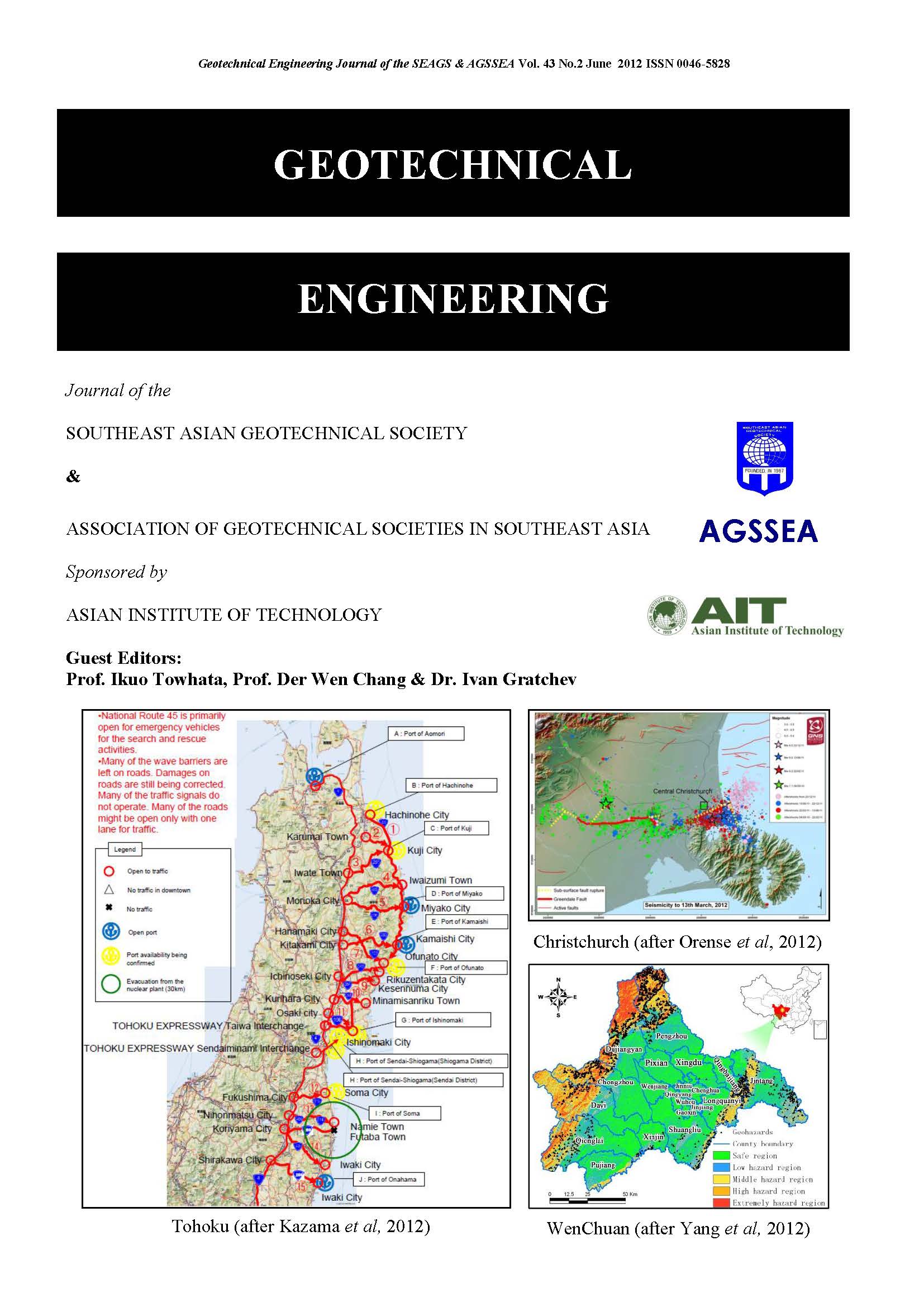Characteristics of Slope Failures During Natural Disasters Considering Geographical Features and Groundwater Level: Case Study of the Chuetsu Region of Niigata, Japan
Main Article Content
Abstract
Several natural disasters—earthquakes, heavy rainfall, and snow—struck the Chuetsu region of Niigata during the short period of 2004-2011. Recently it has been pointed out that damage by a certain natural disaster is exacerbated by other natural disasters occurring before and after the natural disaster. This phenomenon, designated as a compound disaster, is of widely acknowledged importance. Records of such uncommon disaster circumstances and effects are presumed to be valuable from the viewpoint of disaster prevention. Therefore, actual conditions of damaged areas were investigated in the Chuetsu area to assess the degree of damage, with consideration of geographical features including geology and groundwater level. Moreover, the results of follow-up monitoring related to the damaged slopes during the unprecedented Chuetsu Earthquake are briefly introduced in this paper.
Article Details

This work is licensed under a Creative Commons Attribution-NonCommercial-NoDerivatives 4.0 International License.
Copyright © 2019 Association of Geotechnical Societies in Southeast Asia (AGSSEA) - Southeast Asian Geotechnical Society (SEAGS).


